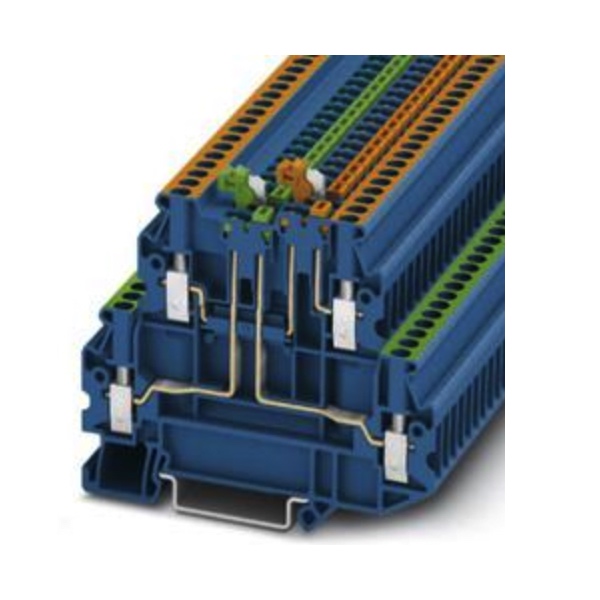Disconnect Terminal Blocks

Disconnect terminal blocks are designed to safely interrupt electrical circuits without requiring conductors to be removed. Commonly installed in control cabinets, these terminal blocks provide a practical method for isolating circuits during maintenance, testing, and troubleshooting. By allowing technicians to access circuits directly at the terminal block, they help reduce risk while improving efficiency during system service and diagnostics.
RSP Supply offers disconnect terminal blocks with features that support safe handling of live circuits when testing or troubleshooting is required. Test disconnect terminal blocks allow circuits to be opened or measured without fully disconnecting power, enabling accurate testing using standard electrical instruments. This functionality helps minimize wiring errors and reduces the need to disturb permanent connections within the control panel.
Disconnect terminal blocks are typically DIN rail mounted and engineered to fit into compact panel layouts. Many designs incorporate disconnect levers, removable links, or integrated fuse holders to provide flexible circuit separation and added protection. These features make disconnect terminal blocks well suited for modular wiring systems and multi-circuit control panels where clear isolation and safe operation are essential.
FAQs
Q: What is the primary purpose of a disconnect terminal block?
Disconnect terminal blocks allow electrical circuits to be safely interrupted for maintenance, testing, or troubleshooting without removing the connected wires.
Q: How do test disconnect terminal blocks work?
Test disconnect terminal blocks enable circuits to be opened or measured directly at the terminal block, allowing technicians to test live circuits safely using standard test equipment.
Q: What mounting types are used for disconnect terminal blocks?
Most disconnect terminal blocks are designed for DIN rail mounting, making them easy to install and organize within control cabinets.
Q: Do disconnect terminal blocks support fuse protection?
Yes, many disconnect terminal blocks include integrated fuse holders or are compatible with protective devices to enhance circuit safety.
Q: What conductor sizes do disconnect terminal blocks support?
Disconnect terminal blocks typically support conductor cross sections ranging from approximately 0.2 mm² to 10 mm², depending on the specific model.
Why Buy Disconnect Terminal Blocks from RSP Supply
RSP Supply offers a dependable selection of disconnect terminal blocks designed for safe circuit isolation and efficient testing in industrial control panels. Our products support organized wiring, reliable connections, and compatibility with common DIN rail systems. Customers rely on RSP Supply for knowledgeable technical support and consistent access to industrial-grade terminal block solutions.

